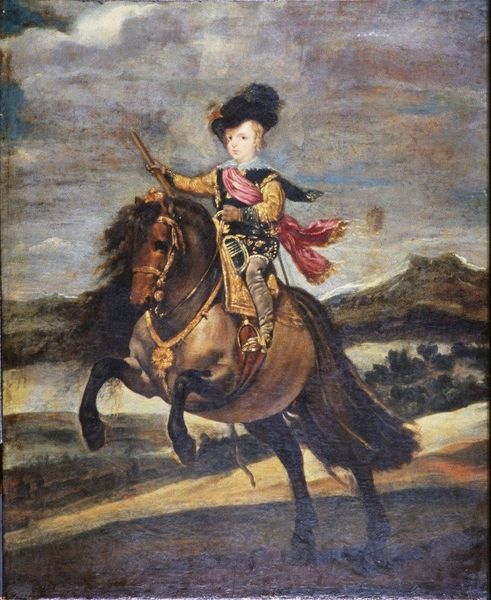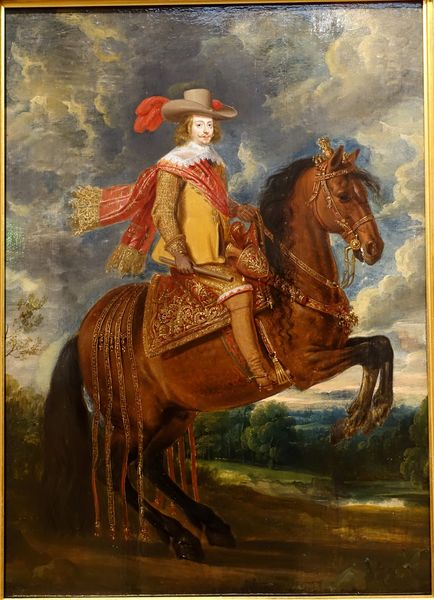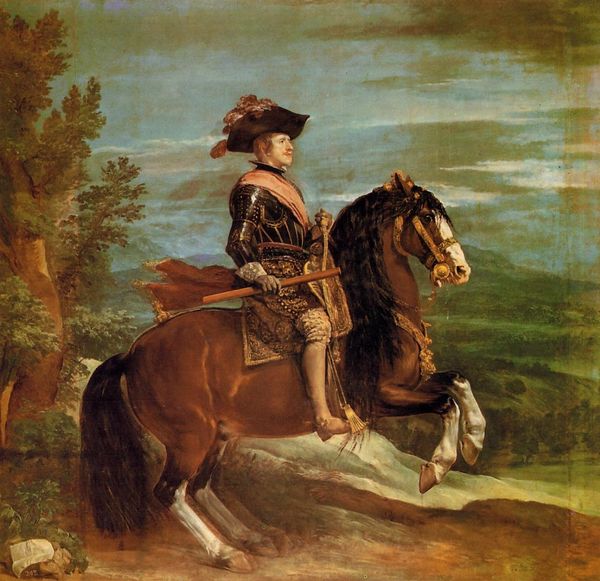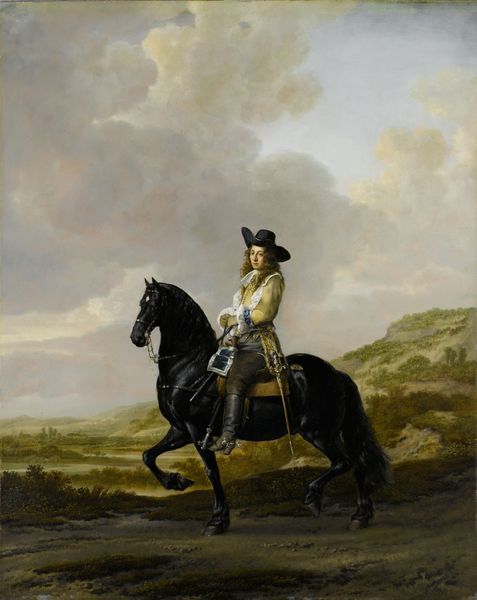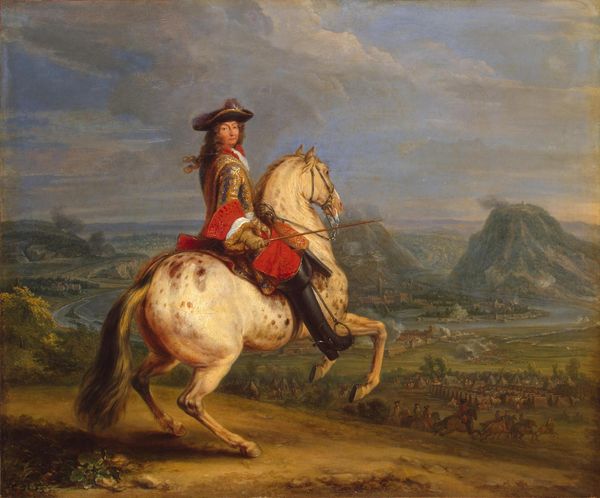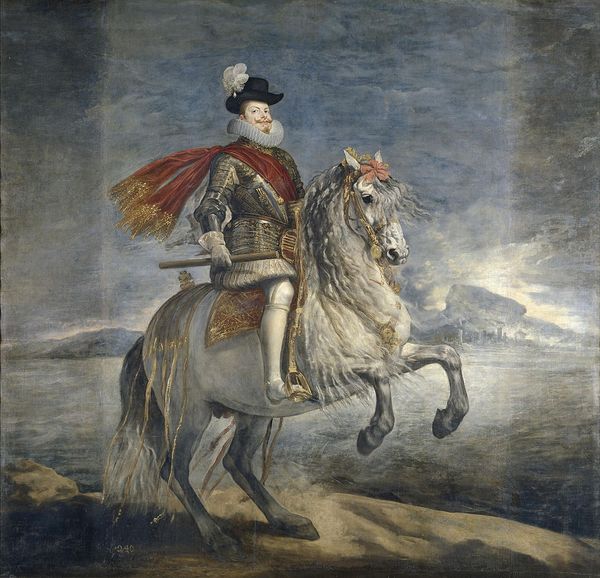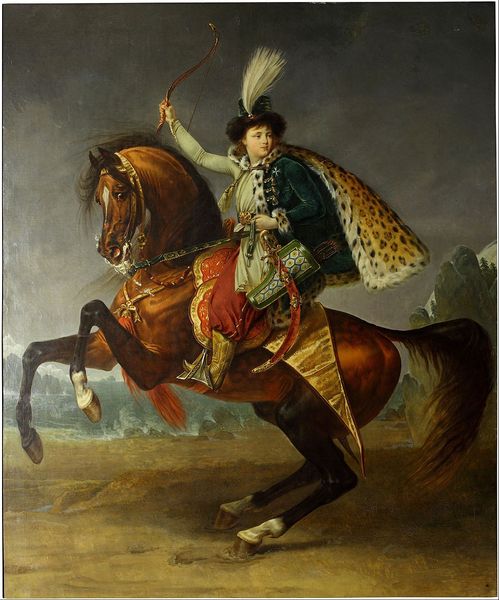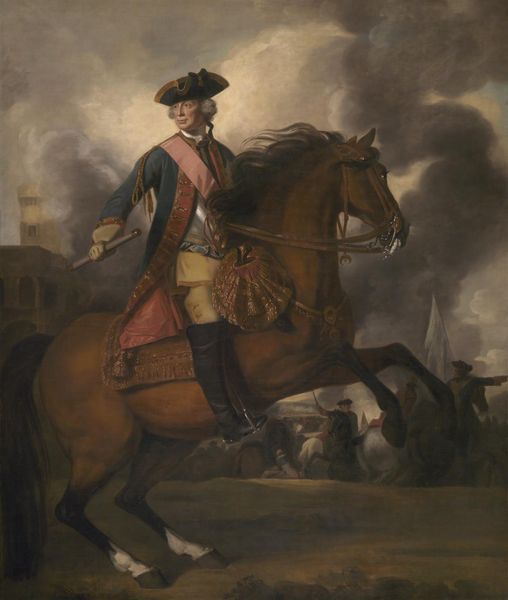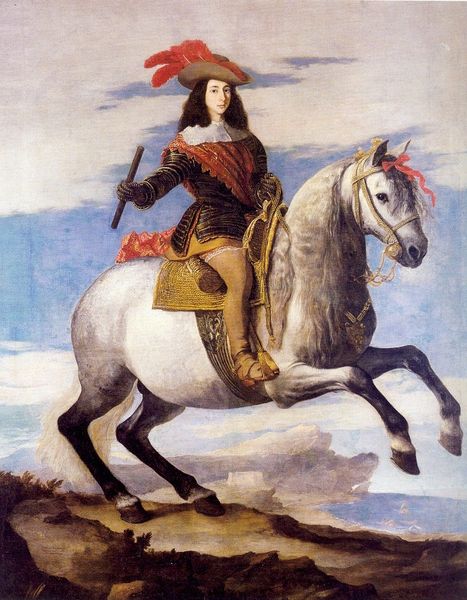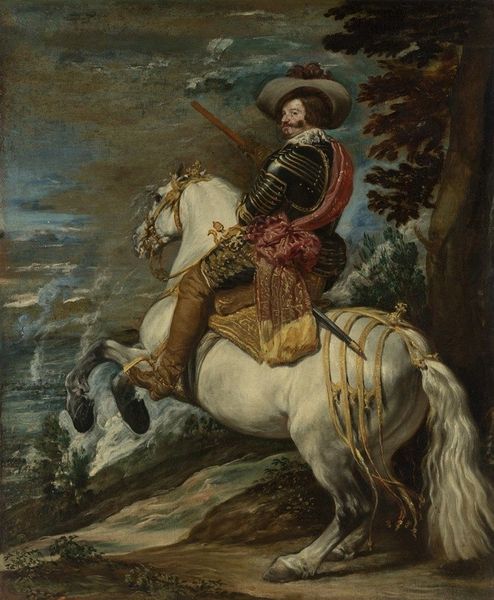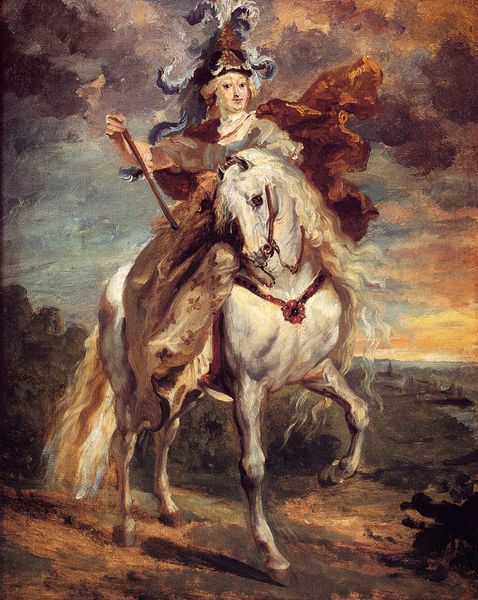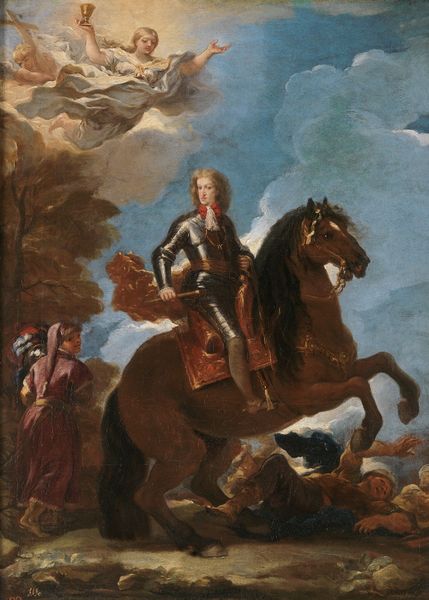
oil-paint
#
portrait
#
baroque
#
animal
#
oil-paint
#
landscape
#
figuration
#
oil painting
#
child
#
animal portrait
#
horse
#
genre-painting
#
history-painting
Dimensions: 173 x 209 cm
Copyright: Public domain
Curator: Standing before us is Diego Velázquez's equestrian portrait of "Prince Balthasar Carlos," completed around 1635. Editor: It strikes me as both grand and… slightly absurd? The juxtaposition of the very young prince, dressed in such elaborate finery, perched atop that rearing horse—it's an interesting statement. Curator: It’s definitely a demonstration of power and succession, very much in line with royal portraiture of the era. The depiction served the Bourbon monarchy in particular and portraiture of royalty in general, quite well. Editor: Of course. The horse itself is such a potent symbol. The raised front legs and confident gaze communicate dominance, leadership, and conquest. Even the subdued landscape and turbulent skies can represent the challenges that a ruler is supposed to manage effectively, and perhaps they could be associated with particular geopolitical problems. Curator: True, but the context of the court plays a crucial role. Consider the influence of the Habsburgs on the Spanish court during the 17th century. Velázquez wasn't just capturing an image; he was reinforcing the legitimacy and divinely ordained right to rule, even through the symbol of an heir apparent. It could just be for his family, but if it gets put in a public setting that narrative is on display. Editor: You're right; there is that air of inevitability. And Balthasar's presence almost feels more symbolic than individual, he almost could be any noble in this image if he didn't have such distinct and childish facial features. It’s interesting, that tension between person and personification of an ideal. Curator: It reveals the function of court portraiture. Velázquez worked to both depict and to carefully construct the image the monarchy wished to project to its court, to other kingdoms, and down through history. Editor: Indeed, a powerful and considered, even politically charged work of art, beyond the innocent face of its primary subject. The potent use of traditional imagery and the role this played as Spanish royalty transitioned to more global significance remains clear.
Comments
No comments
Be the first to comment and join the conversation on the ultimate creative platform.
